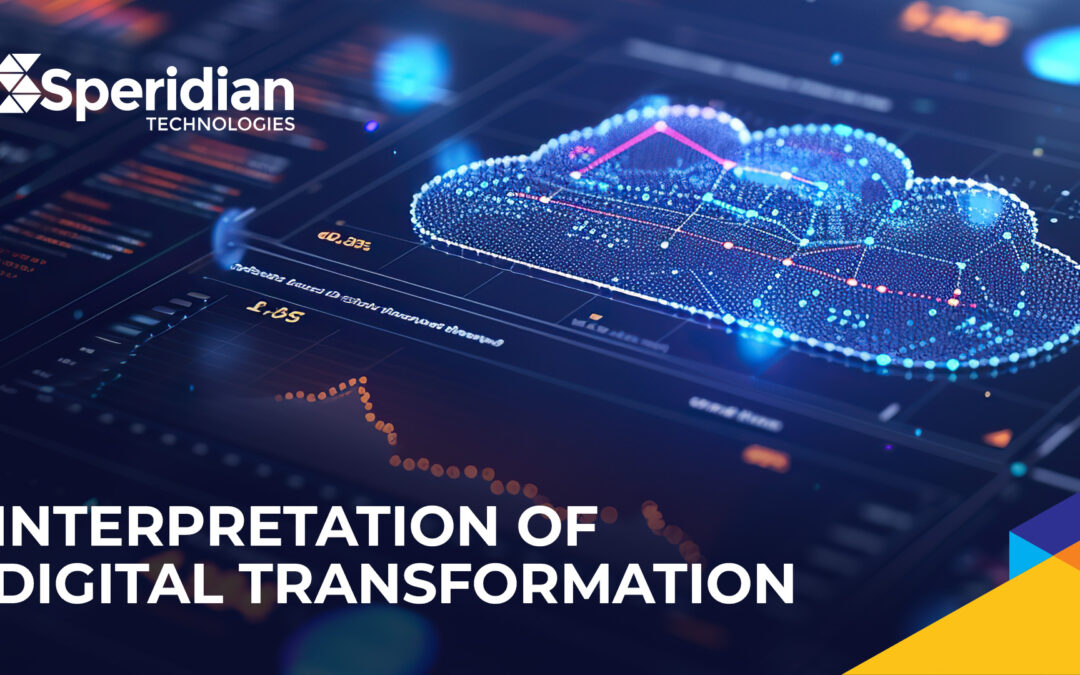Interpretation of Digital Transformation
Due to the pandemic’s disruption of business operations, digital transformation was accelerated by global companies in response to changing needs for both employees and customers. Now more than ever, companies are leveraging technology to improve processes and increase business value. Yet, is digital transformation interpreted in the same manner by all industries?
Table of Contents
How digital transformation is interpreted by industry
Digital transformation is an organization-wide endeavor to integrate technology that transforms business processes to optimize performance and achieve better outcomes. It helps companies experiment with new ways of doing business to become more agile and strategic.
The challenge most companies experience with digital transformation is that they confuse it with continuous improvements. Digital transformation not only requires integrating new technology but a cultural change that fundamentally alters how work is completed by employees.
Let’s take a look a how a few different industries have interpreted digital transformation.
Finance
The finance industry has been an early adopter of technology and digital transformation. Digital transformation in financial services meant more than traditional automation. It meant changing business models that have been in place for decades, requiring both a shift in leadership focus and significant organizational change.
Data-driven mobile channel technology and the conversion of paper to digital documents in both consumer-facing and back-office processes have driven digital transformation in the financial sector. Digitization and automation in banking have provided direct and indirect benefits to the customer experience through improved digital processes. From customer service chatbots to software robot bankers, disruptive digital technologies like artificial intelligence (AI), robotics, and blockchain are changing the finance industry.
Blockchain is at the forefront of emerging technologies that financial institutions believe could profoundly impact the way they do business. Many financial institutions are using blockchain to build a variety of platforms—such as payments and trade finance—and are beginning to engage with established cryptocurrencies.
Healthcare
Digital transformation in healthcare had been a struggle. Unfortunately, the healthcare and pharmaceutical industries have lagged when it comes to implementing digital strategies. In fact, in a recent survey, only 7 percent of healthcare and pharmaceutical companies said they had gone digital, compared to 15 percent of companies in other industries. Healthcare organizations face non-technological obstacles such as cultural resistance, budget and resource restrictions, and governance issues. However, the pandemic required organizations to expedite the use of telehealth, remote monitoring, and digital health with positive outcomes for patients.
As a result, the healthcare industry continues to accelerate the adoption of technology to provide faster, on-demand, and higher-quality care. By leveraging technology like AI or virtual reality, organizations can place more emphasis on preventative approaches to patient care than the previous focus on treatment.
Entertainment
Digital transformation in the entertainment and media industry has allowed early adopters to be resilient and ready to meet the changing demands of customers. During the pandemic, companies who had embraced digital transformation were ready to deliver content on not just one channel, but multiple channels, giving customers a consistent brand experience at different touchpoints.
By adopting AI technology, the entertainment industry continues to accurately predict customer preferences for content. Analytics helps entertainment and media companies create content that is personalized, immersive, and delivered when and where the customer chooses.
Introducing the non-fungible token (NFT) into the entertainment and media space is a major breakthrough for crypto. The media industry is utilizing NFTs to code and secure digital art. Through NFTs, owners can track the value of their assets over time.
Manufacturing
COVID-19 has pushed manufacturing companies over the technology tipping point and transformed businesses forever. The pandemic accelerated the adoption of digital technology by several years. Leveraging digital tools helps manufacturing companies optimize operations, create efficiencies, and find cost savings. By harnessing data and analytics, manufacturers can now produce better products and services, while improving customer experiences.
The future of manufacturing is focused on intelligently connecting systems for better collaboration and production using technology such as IoT, robotics, and AI. Unified systems bring efficiencies for manufacturing companies creating products and services that provide value to customers.
How industry ecosystem and company culture contribute towards adoption
Digital transformation isn’t just about using software or technology but making significant organizational changes. The real impediment to successfully introducing a digital-first culture is ensuring changes have buy-in from both leadership and employees. Without this support, digital transformation won’t likely occur.
Digital is more human – people are at the center of digital transformation. Technology will evolve and customer demands will change, but an organization can’t experience digital transformation until employees change the way they work. Involving employees in the planning process helps them understand what digital transformation is trying to achieve and eases any fear about the changes to come. It also provides an opportunity for employees to provide feedback, making them feel part of the process. Engaged and informed employees lead to greater adoption of digital tools and a greater opportunity for digital transformation success.
Does disruption qualify as digital transformation?
Digital disruption is when new technology changes the value of an industry’s products and services. For example, how smartphones eliminated the need for landline phones and payphones, or email has replaced the long process of writing a letter and mailing it.
Digital disruption differs from digital transformation which is an ongoing process of change by an organization to remain agile. An example of a company that has been successful with digital transformation is Nike which used machine learning and mobile to create an app that allows a customer to scan their feet to discover the shoes best suited for them. The data collected helps Nike respond to market needs faster and to create the kind of shoes customers want.
What is the end game?
A reoccurring theme in digital transformation for all industries is optimizing processes and changing how people work to serve customers better. This is important now more than ever with most customer activity taking place online. Today’s digital customer wants products and services on-demand and expects the companies they do business with to provide fast, personalized support 24/7 across all channels.
Digital transformation is an ongoing process that helps companies become more agile and resilient to business interruptions like the pandemic. It’s not only about using new technology but leveraging it to improve processes and optimize performance. When companies, regardless of industry, are empowered with operational efficiency and data that helps them understand their customers, they can improve the customer journey to make every interaction seamless.

Sourav Roy�
Vice President – Digital Solutions
Roy is the Vice President of Digital Solutions at Speridian Technologies. In this role, Roy sets the strategic direction of the business unit, promotes Speridian’s client-first culture and focuses on creating sustainable growth by bringing together the industry’s leading technology trends, capabilities, solutions, partnerships, and subject matter expertise into a single integrated unit. Roy is an experienced technology executive with 22 years in consulting, with a proven track record of building business and driving inside driven digital transformation through focused execution.


